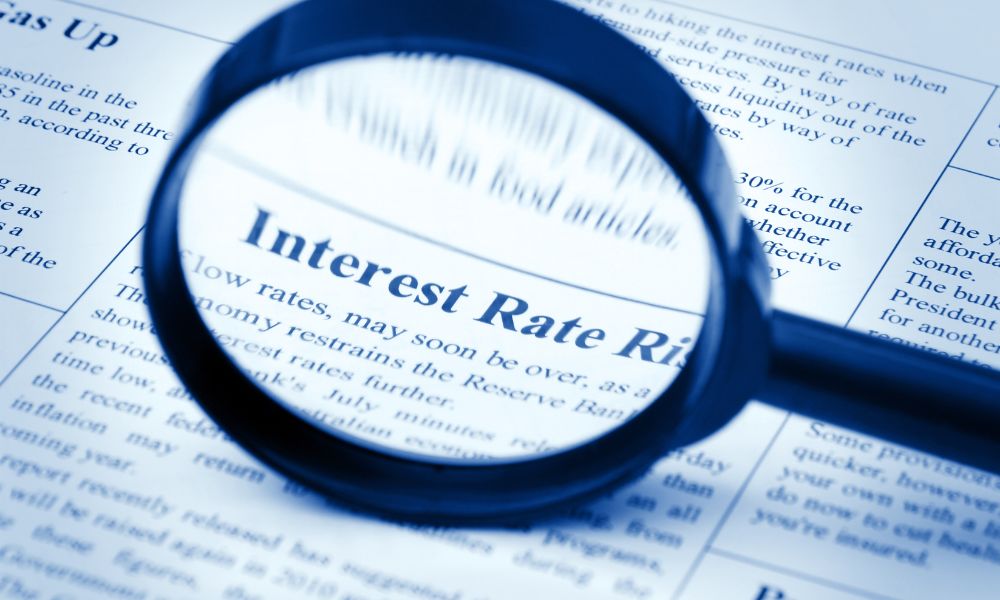It’s looking increasingly likely that the much anticipated Federal Reserve rate cut will happen this September.
The Fed’s chair, Jerome Powell, recently gave a speech at Jackson Hole highlighting the cooling jobs market and downward payroll revision in addition to his confidence in inflation moving towards the Fed’s 2% target. Taken together, these factors often mean it is time to adjust monetary policy to one that is less restrictive – giving the market hope of a cut. In fact, a shift towards looser monetary policy was reflected in the minutes from the Fed’s last meeting too – most policymakers indicated a rate would be appropriate this quarter.
As a result, while a cut is still not a certainty, the market is now pricing the likelihood of a 25pbs reduction as a 70% chance and a 30% chance of a 50pbs cut.
So, what does this mean for investors? What should they be doing given the high probability of a rate cut?
Here, we look to answer those exact questions and explore how a cut may affect investments. Remember, however, even though the impact of rate cuts is crucial to understand, the extent of the impact will vary from investor to investor. Therefore, any investment decisions should always take into account an investor’s specific risk profile and investment targets.
The impact of rate cuts on the market
Generally, when the Fed makes a rate cut, investors become more optimistic. Lower interest rates reduce borrowing costs for businesses and consumers alike, encouraging spending and investment, which are good for corporate earnings and economic growth. As a result, a lower interest rate environment is favorable for equities, which benefit from easier credit conditions.
More specifically, rate-sensitive stocks and sectors could perform better than others. For example, small cap stocks may do well as easing financial conditions could boost their growth prospects. Or, in real estate, a rate cut could help as mortgages should become more affordable so house sales may see a pick-up.
In the fixed-income space, bond yields decrease when there is a rate cut. As a consequence, there is more potential for capital appreciation in fixed income investments when yields fall. Furthermore, investors may also choose to lock in rates now to ensure better protection in the future.
In terms of more definitive strategies, in a falling interest rate environment, corporate bonds from high-quality companies could do well, with investors likely to get better spreads above the risk-free treasury rate. Additionally, U.S. mortgage bonds, which benefit from the government’s backing, also offer an attractive spread with yields of 5%—so above the 10-year Treasury yield, but arguably with just a little more risk.
However, while this all sounds encouragingly positive, it’s essential to remember why the Fed is cutting rates in the first place. At the moment, a rate cut looks likely because the economic backdrop is weakening. For instance, the labor market is dwindling, while other factors also point to slowing growth. In short, the Fed is concerned there may be a recession, which is an environment where some businesses can struggle. Doing due diligence on companies before taking any positions in them therefore remains key.
The impact of rate cuts on the market
Generally, when the Fed makes a rate cut, investors become more optimistic. Lower interest rates reduce borrowing costs for businesses and consumers alike, encouraging spending and investment, which are good for corporate earnings and economic growth. As a result, a lower interest rate environment is favorable for equities, which benefit from easier credit conditions.
More specifically, rate-sensitive stocks and sectors could perform better than others. For example, small cap stocks may do well as easing financial conditions could boost their growth prospects. Or, in real estate, a rate cut could help as mortgages should become more affordable so house sales may see a pick-up.
In the fixed-income space, bond yields decrease when there is a rate cut. As a consequence, there is more potential for capital appreciation in fixed income investments when yields fall. Furthermore, investors may also choose to lock in rates now to ensure better protection in the future.
In terms of more definitive strategies, in a falling interest rate environment, corporate bonds from high-quality companies could do well, with investors likely to get better spreads above the risk-free treasury rate. Additionally, U.S. mortgage bonds, which benefit from the government's backing, also offer an attractive spread with yields of 5%—so above the 10-year Treasury yield, but arguably with just a little more risk.
However, while this all sounds encouragingly positive, it’s essential to remember why the Fed is cutting rates in the first place. At the moment, a rate cut looks likely because the economic backdrop is weakening. For instance, the labor market is dwindling, while other factors also point to slowing growth. In short, the Fed is concerned there may be a recession, which is an environment where some businesses can struggle. Doing due diligence on companies before taking any positions in them therefore remains key.
How to prepare for a September rate cut
Sadly there is no one-size-fits-all way for every investor preparing for a rate cut - despite its increasing likeliness of happening. Every investor is different. Instead, investors may need to re-evaluate their current positioning and ensure portfolios are structured optimally to help them reach their goals in light of the changing environment.
It is only when this work has been completed that it is possible to see if a rate cut presents any compelling opportunities or risks to try to mitigate. That’s because how investors prepare for a rate cut will ultimately depend on their desired outcomes and their appetite for risk.
Want These Types of Insights at Your Fingertips so You Can Win More Trades?
Use VectorVest to analyze any stock free. VectorVest is the only stock analysis tool and portfolio management system that analyzes, ranks and graphs over 18,000 stocks each day for value, safety, and timing and gives a clear buy, sell or hold rating on every stock, every day.
Before you invest, check VectorVest! Click here to ANALYZE ANY STOCK FREE and see our system in action!










Leave A Comment